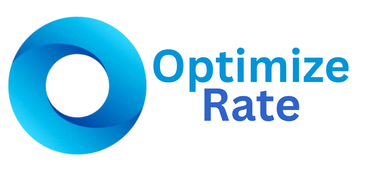
25 Conversion Rate Optimization metrics to measure & improve your website
Here is a detailed breakdown of how to measure your website's conversion rate, so that you can make evidence-backed improvements and know that you are maximising your site's effectiveness.
7/1/20256 min read
What Is Conversion Rate Optimization?
Conversion Rate Optimization (CRO) is about making your website work better. It helps you get more visitors to do what you want them to do on your site.
Think of it like this: if 100 people visit your store, but only 2 people buy something, CRO helps you figure out how to get 3 or 4 people to buy instead.
The actions you want visitors to take are called "conversions." These might be:
Buying something (for online stores)
Signing up (for newsletters or services)
Filling out forms (like contact forms)
How to Choose the Right Conversions
To pick the best conversions for your business:
Think about what helps your business grow
Look at what your visitors do on your site
Focus on the actions that make you the most money
Example: Let's say you sell eco-friendly products online. Your main goal is sales, but you might also want people to add items to their wish lists or fill out forms for product advice.
If you are still not 100% clear on what Conversion Rate Optimization is, you can read our detailed article The Complete Beginner's Guide to Conversion Rate Optimization (CRO)
25 Key Metrics to Track Your Success
To improve your website, you need to measure the right things. Here are 25 important metrics, organized by when they happen in your customer's journey, which generally follows; Awareness, Engagement, Conversion, Post-Conversion (Converted).
A. Awareness Metrics
These metrics show how well you're attracting new visitors.
1. Click-Through Rate (CTR)
This shows how often people click on your a link or a button, either in your content or advertisements leading to your content.
Formula: CTR = (Number of Clicks ÷ Number of Times Shown) × 100
Example: If your email has a personalized subject line, people might click on it 20% more often.
2. Traffic source
This tells you where your visitors come from - like Google, Facebook, or email. You can find this information in Google Analytics.
The specific metric might be a measure of what perfect of traffic came from which source. For example, 36% of traffic came from your emails, or 17% came from Google search.
B. Engagement metrics
These metrics show how visitors interact with your website, which indicates how much value you are providing to them.
3. Page load time
This measures how long it takes for your webpage to load completely. This includes any images or videos, or any page scripts that need to load before the page is active and fully ready to use.
What's Good: Your pages should load in 2 seconds or less. The average is 2.5 seconds for computers and 8.6 seconds for phones.
You can check this using Google PageSpeed Insights or GTmetrix.
4. Bounce rate
This shows the percentage of people who visit just one page and then leave.
Formula: Bounce Rate = (Single Page Visits ÷ Total Visits) × 100
What's Good: Try to keep this below 40%. If it's above 55%, you need to make improvements.
5. Average time on page
This shows how long people stay on each page. People measure this different, but a simple and easy to use metric is the following formula.
Formula: Average Time on Page = Total Time on Page ÷ Total Page Views
Example: If people only spend 30 seconds on your how-to articles, try adding videos or pictures to make them more interesting.
6. Pages per session
This counts how many pages people look at during one visit.
Formula: Pages per Session = Total Page Views ÷ Total Sessions
Tip: Add links to related articles to get people to read more.
7. Exit rate
This shows which pages people leave from most often. This is an indication that there is something undesirable about the page that could be improved, unless it is the final "order completed" part of the funnel.
Formula: Exit Rate = (Exits from a Page ÷ Total Page Views) × 100
Note: High exit rates aren't always bad - they might mean people found what they needed.
8. Click depth
This measures how many clicks it takes to reach a page from your homepage. Generally people will start from home page before trying to navigate to what they are trying to find.
What's Good: Important content should be within 3 clicks of your homepage.
You can find this information in Google Analytics under Audience > Behavior > Engagement.
9. Average page scroll depth
This shows how far down people scroll on your pages.
Formula: Average Page Scroll Depth = Scroll Depth Position ÷ Total Number of Page Views
What It Means: If people only scroll 25% down a long article, they might not be finding it interesting.
10. User path analysis
This tracks the route people take through your website.
Example: You might find that people leave after viewing your "Features" page. Adding a video and a clear "Request Demo" button could help 25% more people continue.
C. Conversion metrics
These metrics measure how well your site turns visitors into customers.
11. Visitor conversion rate
This shows what percentage of visitors complete your desired action.
Formula: Visitor Conversion Rate = (Number of Conversions ÷ Number of Visitors) × 100
What's Good: Most websites typically see 2% to 5% conversion rates.
12. Funnel conversion rate
This tracks how many people complete each step of your sales process.
Formula: Funnel Conversion Rate = (People Who Completed Final Action ÷ People Who Started) × 100
Example: For software companies, people might read a blog post, then sign up for a free trial, then become paying customers.
13. Cart abandonment rate
This shows how many people add items to their cart but don't buy. This is a great indication of whether there is friction or doubt that is preventing a customer from purchasing your products.
Formula: Cart Abandonment Rate = (Abandoned Carts ÷ Shopping Carts Created) × 100
Solution: If 80% of people abandon their carts, try adding more payment options like PayPal or Apple Pay.
14. Checkout completion rate
This measures how many people who start buying actually finish.
Formula: Checkout Completion Rate = (Completed Purchases ÷ Started Checkouts) × 100
Common Problems: Long checkout processes, slow loading, or limited payment options.
15. Average form completion rate
This shows how many people fill out and submit your forms.
Formula: Average Form Completion Rate = (Form Submissions ÷ Form Starts) × 100
Tip: Single-page forms work better (53% completion) than multi-page forms (13.85% completion).
16. Subscription signup rate
This measures how many visitors sign up for your newsletter or service.
Formula: Subscription Signup Rate = (Number of Signups ÷ Total Visitors) × 100
Tip: Offer a free trial and make signup simple (just email and password).
17. CTA conversion rate
This tracks how many people click your call-to-action buttons and complete the desired action.
Formula: CTA Conversions = (Completed Actions ÷ CTA Clicks) × 100
Tips:
Place CTAs at the end of product pages (70% increase in conversions)
Add urgency like "limited time" (332% increase in conversions)
18. Returning user conversion rate
This shows how many repeat visitors take action.
Formula: Returning User Conversions = (Conversions from Returning Visitors ÷ Total Returning Visitors) × 100
Important: Returning visitors are 75% more likely to buy than new visitors.
D. Post-Conversion Metrics
These metrics help you understand the long-term value of your customers.
19. Customer Acquisition Cost (CAC)
This is how much it costs to get one new customer.
Formula: CAC = Total Marketing Expenses ÷ Number of New Customers
Tip: Reducing CAC by 10% can increase profits by 25-30%.
20. Cost Per Acquisition (CPA)
This measures the cost to get a customer through a specific marketing channel.
Formula: CPA = Total Campaign Cost ÷ Number of Acquisitions
Strategy: Compare costs across different channels to find the cheapest options.
21. Cost Per Conversion (CPC)
This tracks the cost of any conversion, not just sales.
Formula: CPC = Total Marketing Expenses ÷ Number of Conversions
Example: If email signups cost too much, try adding one-click signup buttons and video testimonials.
22. Customer Lifetime Value (CLV)
This estimates how much money one customer will spend with you over time.
Formula: CLV = (Average Purchase Value) × (Average Purchase Frequency) × (Customer Lifespan)
Important: Always compare CLV to CAC to make sure you're profitable.
23. CLV to CAC Ratio
This compares how much customers are worth to how much they cost to get.
Formula: CLV to CAC Ratio = Customer Lifetime Value ÷ Customer Acquisition Cost
What's Good: Aim for 3:1 (customers should be worth at least 3 times what they cost to acquire).
24. Average Order Value (AOV)
This shows the average amount customers spend per order.
Formula: AOV = Total Revenue ÷ Number of Orders
Tip: Try product bundles or free shipping for orders over a certain amount.
25. Return On Ad Spend (ROAS)
This shows how much money you make for every dollar spent on advertising.
Formula: ROAS = Revenue from Ads ÷ Total Cost of Ads
Example: If you make $4 for every $1 spent on ads, your ROAS is 4:1.
___________________________________________________________________________________________________________________
5 Key Benefits of Tracking CRO Metrics
1. Better understanding of your customers
When you track these metrics, you learn how customers behave on your site. You can see where they get stuck and fix those problems.
2. Smarter spending on marketing
You can focus your money on the marketing that works best and stop wasting money on things that don't work.
3. More money
By improving your conversion rates, you turn more visitors into customers, which means more sales.
4. Beating your competition
When you understand what works, you can offer better experiences than your competitors.
5. Better team productivity
Your marketing team can focus on the strategies that bring the best results instead of wasting time on things that don't work.
Grow your customers
Boost your conversion rates and increase sales. Optimize Rate is the best conversion optimization agency that helps businesses like yours to improve website conversion.
© 2025. All rights reserved.
